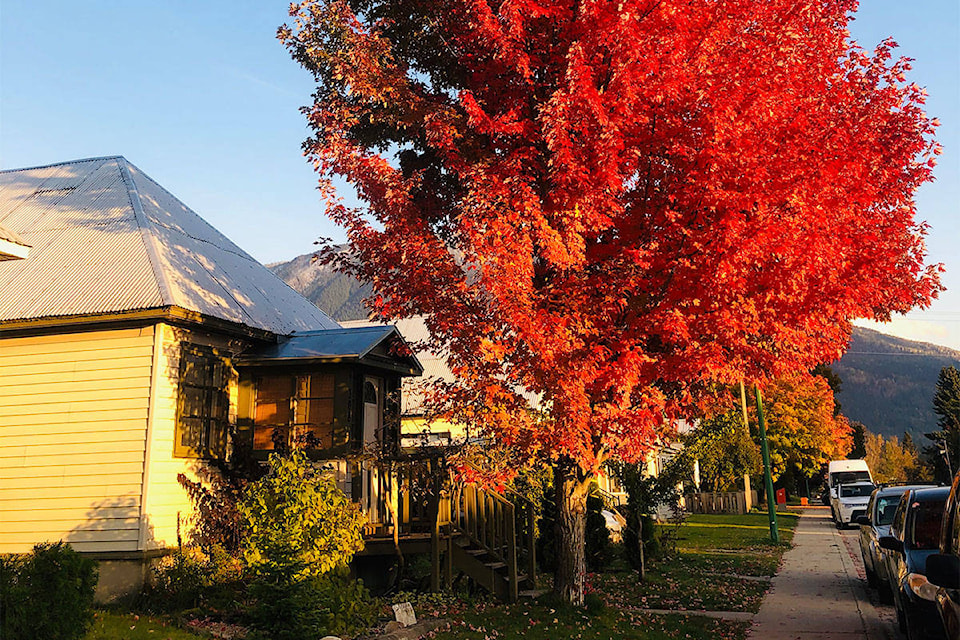Stacie Byrne
Special to the Review
Using our online system, Shelley Bird shared her experience and the experience of her family.
We want to thank Shelley for connecting with us.
It’s families like these that are changing the face of mental health in Revelstoke one story at a time:
There are two sides to fall: the light — when the sun breaks through and the trees show off their vibrant colours; and the dark — with wet and cloudy days and longer nights.
At this time of year, sunny days are cherished. For some people, it makes them feel happier and more energetic, but for many — probably more than you think — in fall, the sunshine will only reach the surface.
As the leaves fall, so can the state of our mental health.
Be sure to look around you, take care of each other and take care of yourself.
I’ve definitely been feeling the effects of fall’s moodiness. Nothing debilitating but enough that some days, just getting out of bed seems like too much effort.
For some people, it can get much worse.
I have personally experienced significant health issues due to situational depression and anxiety.
I have tried to support friends as they struggled in the downward spiral of mental health illness and addictions, and I have lost a friend to suicide.
For those who live with mental illness, there is no season. Every day can be a struggle.
Until more recently, mental health was not something widely discussed.
While what we know and how we talk about mental health issues and illnesses is improving, many social stigmas still exist largely based on misinformation or misunderstandings.
My brother has lived with bipolar disorder since he was a teenager in the 1980s.
An illness in the brain, bipolar disorder causes unusual shifts in mood, energy and activity levels — from extreme highs to extreme lows.
My brother had a troubled adolescence and battled suicidal thoughts in his early 20s before being diagnosed.
Even then, poor treatment and stigma led him into a cycle of alcoholism.
Now in his 50s, he is getting the support and treatment he needs to live a healthy life with bipolar disorder.
Now my teenage daughter struggles with mental health.
It is suspected that she may also have bipolar disorder but sadly, there is very little research or information on the diagnosis and treatment of this illness among youth.
It can be difficult to differentiate between seasonal or situational mood fluctuations, trauma related mental health issues, and mental illnesses at that age. Add to that the hormones and stress of just trying to be a “normal” teenager.
I am thankful for the health professionals who have been there to help us through this.
Signs and symptoms are being recognized not previously flagged when my brother was a teenager.
Unfortunately, little is known about drug treatments for mental illnesses in teenagers, and appropriate counselling or psychological support can be inaccessible or unaffordable.
Currently treatment for mental health and mental illness can be limited or expensive and is not always covered by health insurance.
You can go to the doctor for free when you have a cold — that will usually just heal itself — but you often have to pay (and it’s not cheap) to see a clinical counsellor or psychologist to be treated for much more debilitating, and potentially long-term, mental health concerns and mental illness.
Teenagers (and adults) need to know that mental health problems are normal. Mental illnesses are real and we need to be able to talk about them.
If we can prevent even one suicide by openly talking about mental health, just as we might discuss eating healthy, and by encouraging people to get the help they need, then we are making progress.
Whether illness related, situational, seasonal or for other reasons, we often see an increase in poor mental health at this time of year.
Just as you might focus on leg workouts before ski season, remember to focus on your mental health and to keep an eye out for each other.
Stop the stigma, talk about mental health and get help if you need it.
Sharing your story can be challenging for some who still feel the stigma so strongly. As one person shares: “It’s hard for me to build up courage to go to something like this. I need some time to figure out what I want to say, my story is really raw and emotional and personal and traumatic. But I want help.”
Stacie Byrne is the Project Lead for the child and youth mental health and substance use local action team, which is a part of a larger provincial collaborative working together to support people between the ages of 6-24 years old and their families with mental health and substance use challenges. The collaborative works with service providers and the community to share how all of the pieces of the recovery puzzle fit together and what is available within and outside of Revelstoke. To submit your story go to revelstokecymhsu.wordpress.com/revy-lets-talk/
